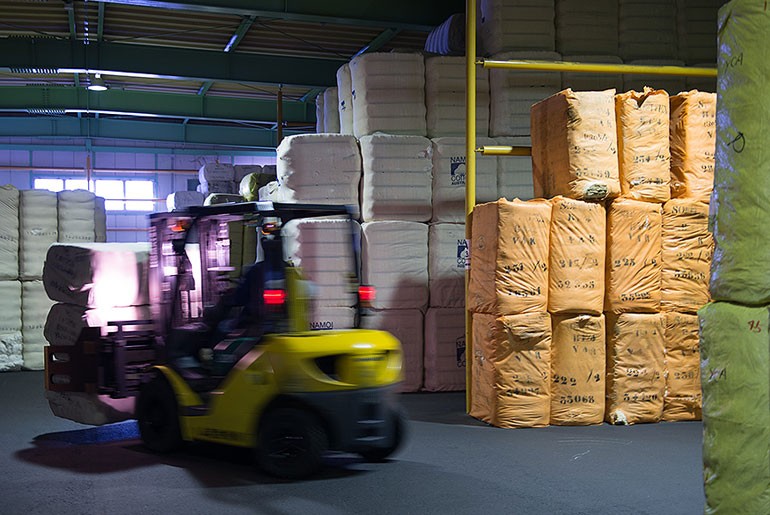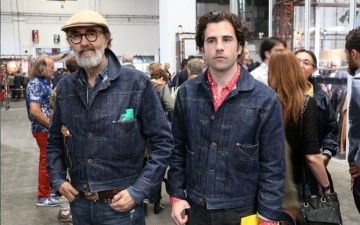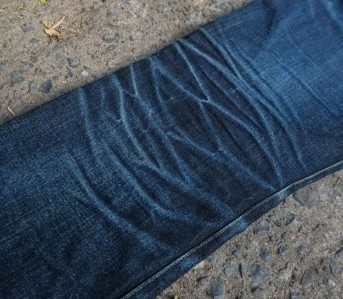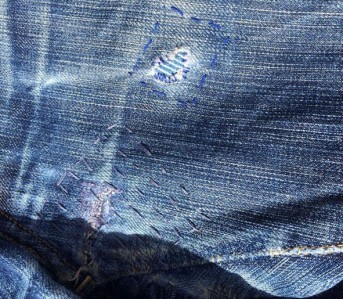We’ve translated and reformatted Japanese brand Workers’ six part feature on the denim production process From Cotton to Jeans. In Part II, they discuss the spinning and carding stages. Click here to start from the beginning.
Part II
Weaving/Raw Cotton Storehouse – Test Spinning
Cotton imported from overseas is kept at a cotton export company’s storehouse. This company imports not only American cotton but also Australian, Peruvian, Indian, Zimbabwean, Chinese, and other varieties of cotton from around the world, each with different characteristics. Even though all of the final products created from it are called cotton, the specifications vary.
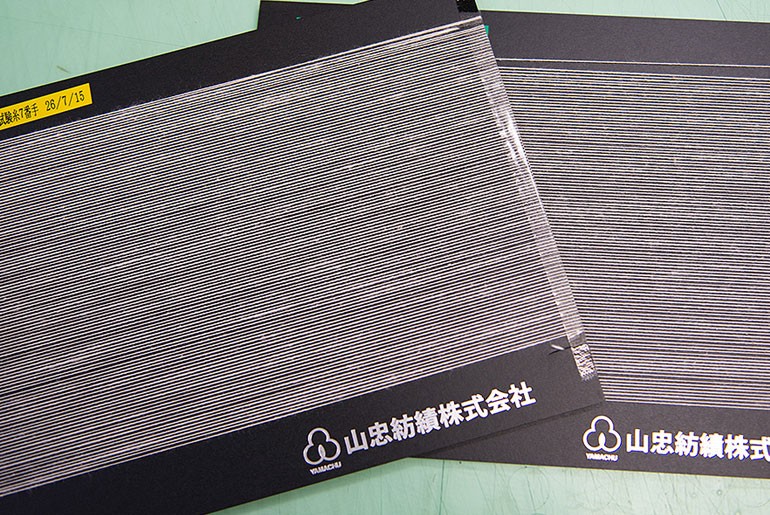
Before the actual process of spinning cotton thread, several test spins are performed. On this occasion, in order to reproduce the desired qualities for our thread, we deconstructed vintage garments and scanned the uneven threads used in them. Using modern techniques, we aimed to reproduce the variable thread thickness of these garments.
Creating The Thread
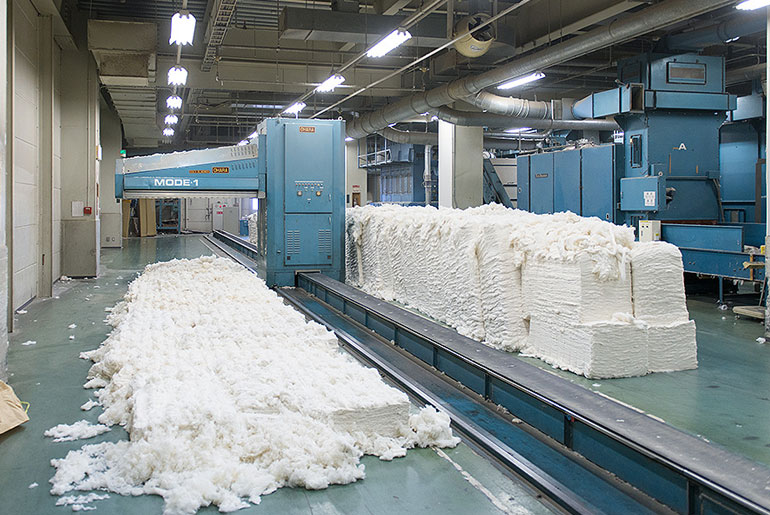
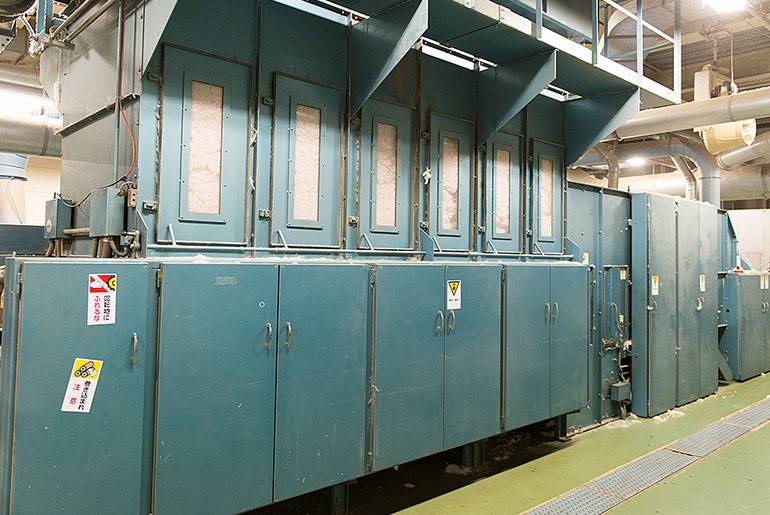
Once we pinned down the desired variation in the thread thickness, we could begin full production of the thread. The first stage involves opening up the tightly-packed bales of cotton, and allowing the loosened cotton to acclimate to the temperature and humidity of the climate-controlled production area for twenty-four hours.
From this, the leaves and other waste from the plant not caught by the gin are removed from the cotton as much as possible. On the right, you can see where the cotton is repeatedly tumbled with air.
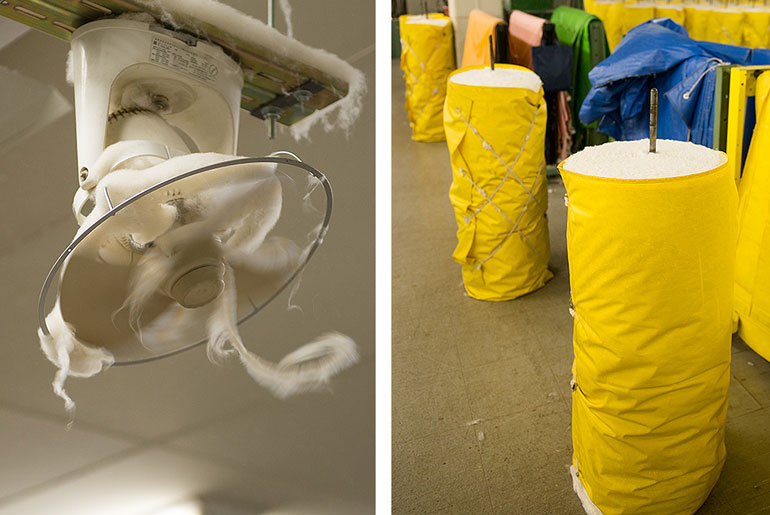
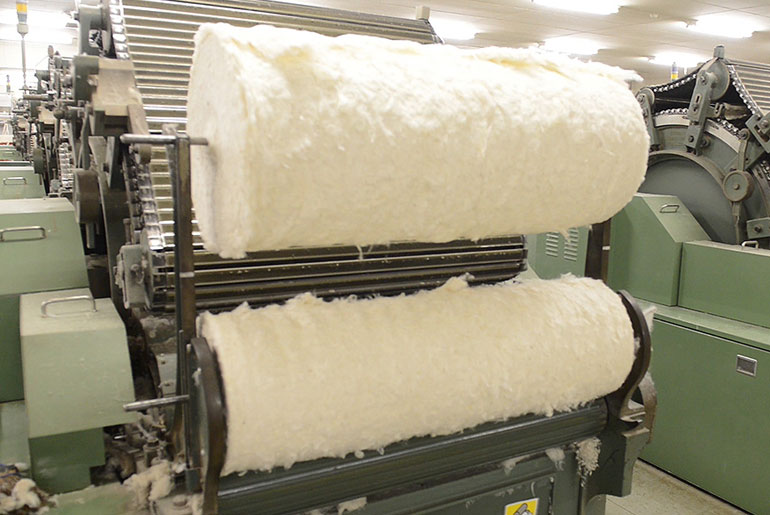
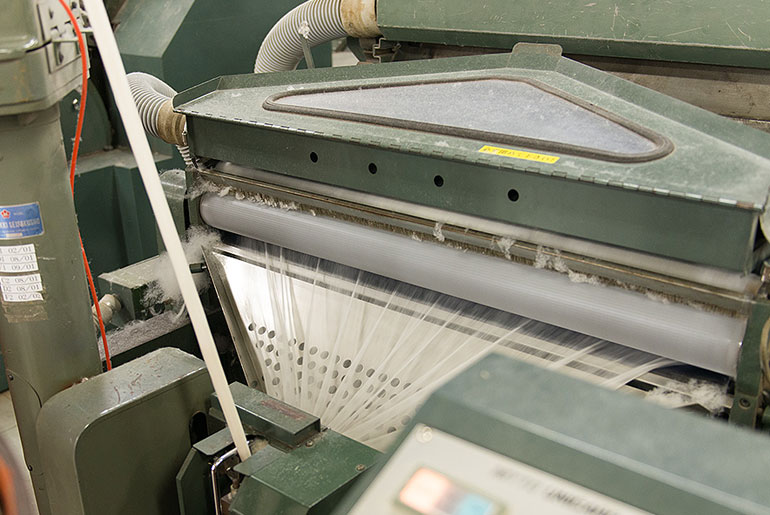
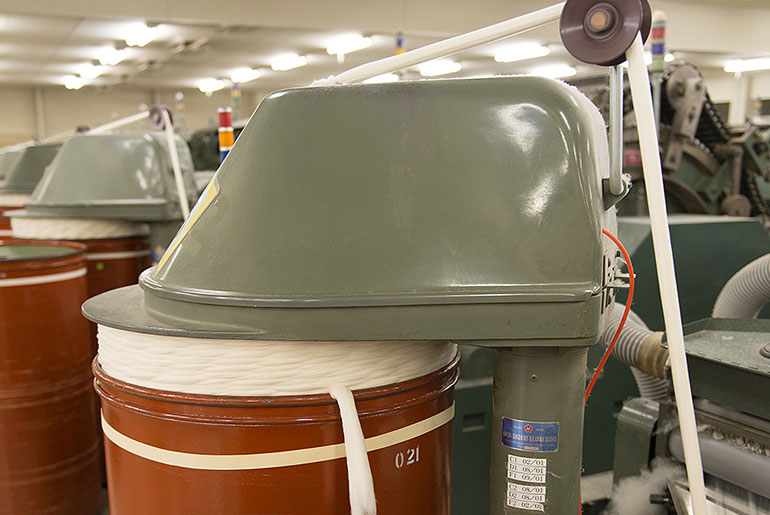
The rolled-up cotton is called a card, and enters the process in which the cotton is completely turned into a textile fiber. A comb is used to uniformly turn the fibre into a sheet, and finally the fibers are spun into strands of thread. Finally, the cotton is gathered into drums by a roller, for easier transportation.
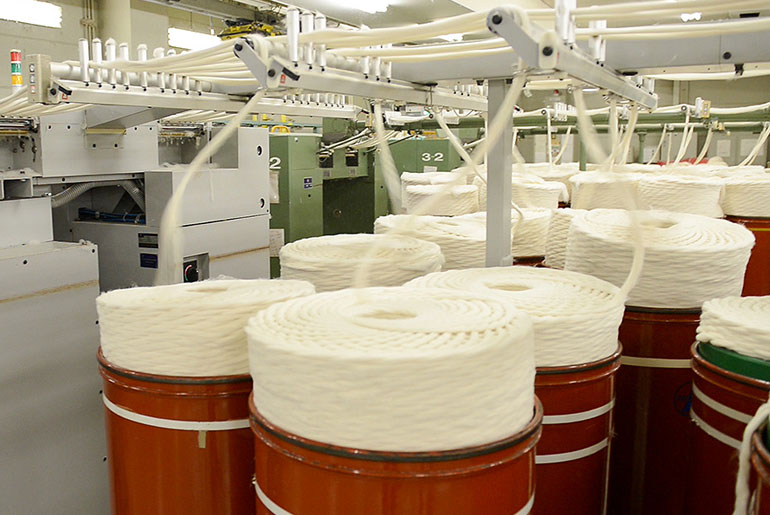
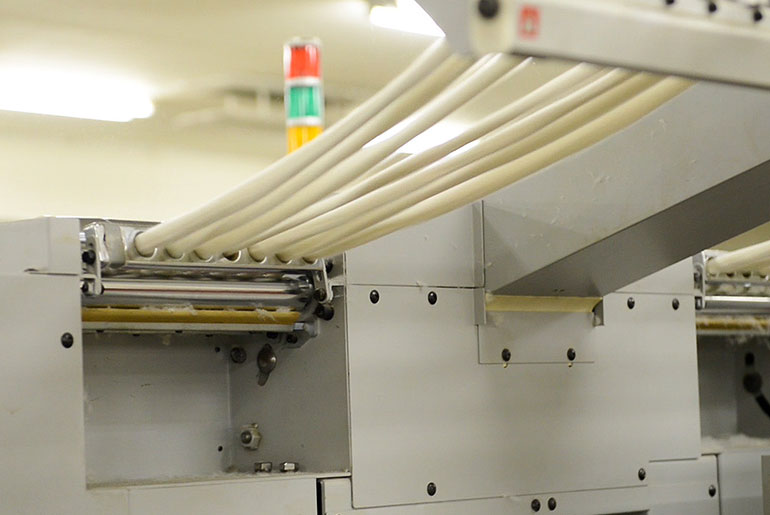
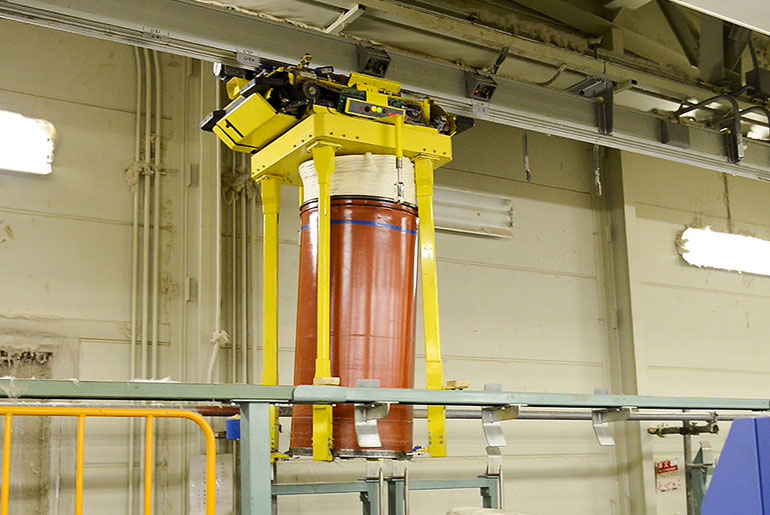
At Yamachu Weaving, seven fibers are spun into one thread, with eight into another. The result is a 7×8 thread, consisting of a total of 56 fibers spun together, with a balance of thick/thin and long/short fibers. This process allows for the creation of the most uniform thread possible.
Rough Spinning – Fine Spinning – Cone Spinning
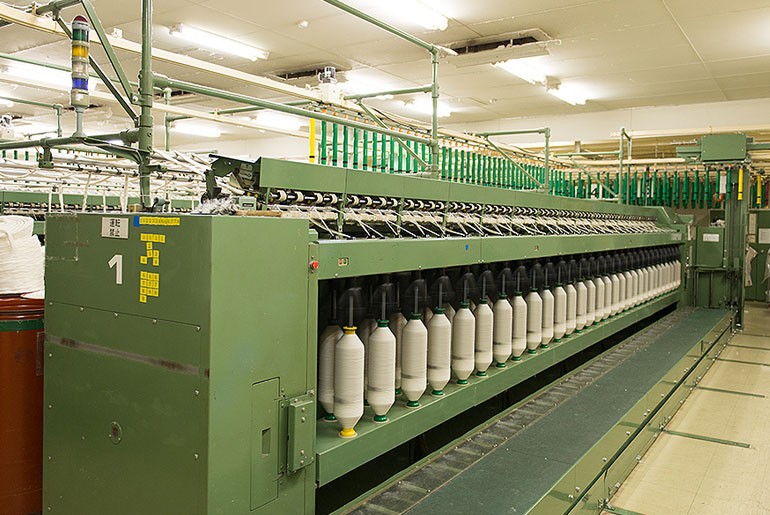
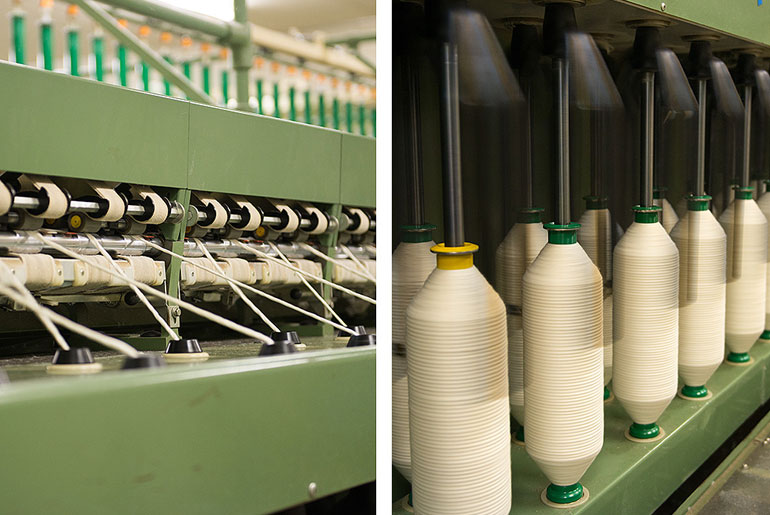
After testing the fiber we proceed to another area where the fibers are additionally pulled and spun – the rough spinning process. After that, the fiber is put into a form for convenient transportation, and moves to the fine spinning process, where it increasingly resembles finished thread.
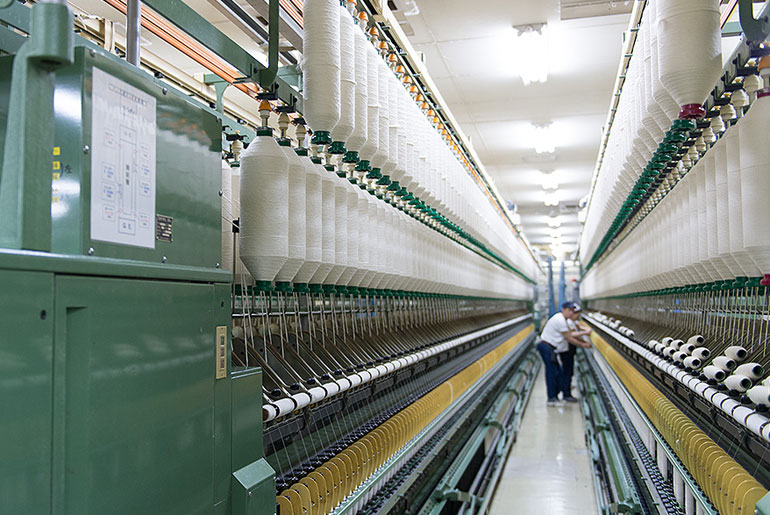
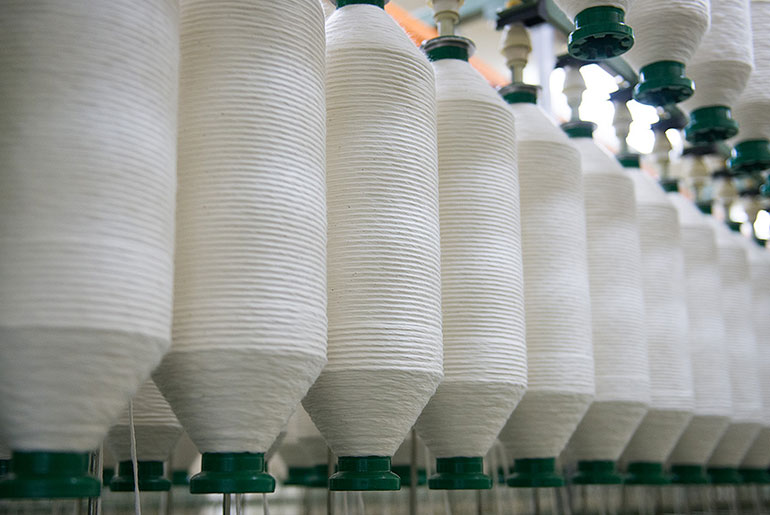
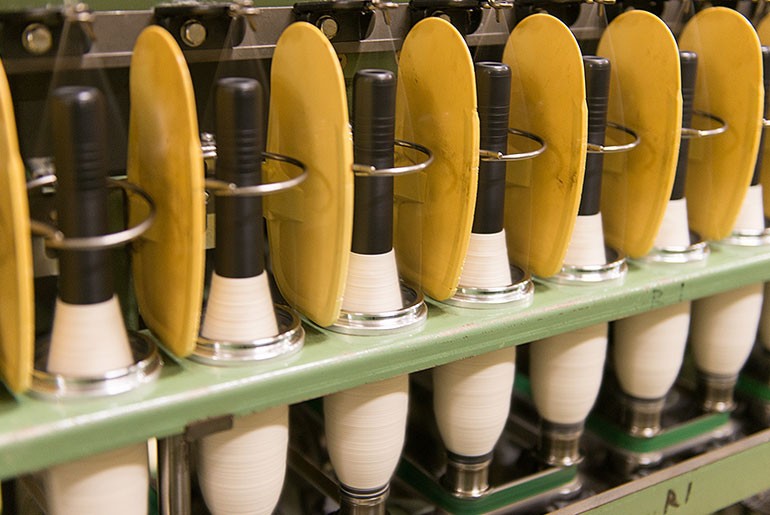
The rough-spun, hanging fiber is on the verge of becoming a thread. From here, the thread is passed downward through a fine spinning machine that creates the uneven texture we desired.
This is where the gauge of thread thickness is created. In the present day, the fine-spinning machine is almost entirely controlled by machine. In the past, processes up to this point were imprecise, which is why vintage garments have the uneven threads that we’ve tried to replicate.
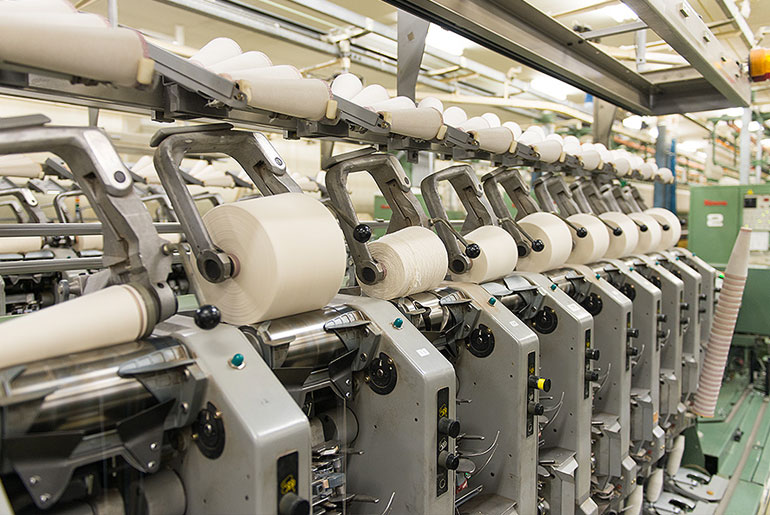
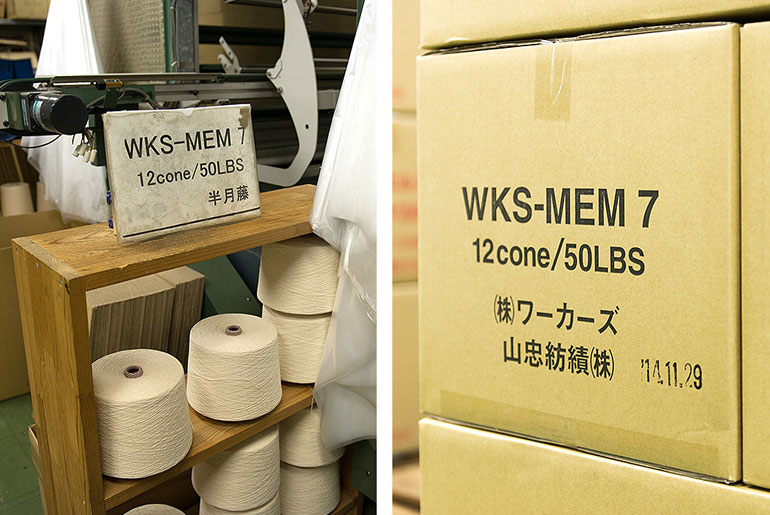
After the completion of the fine spinning process, the finished thread is spun into spools, which measure about approximately 1200 yards/1100 meters long. One of these spools measures about 1.89 kilograms, and this #7 thread is about 24,500 yards/22,400 meters in length.
Check in soon for Part III of Workers’s series From Cotton to Jeans: Dyeing and Weaving. All text and images courtesy of Workers.

